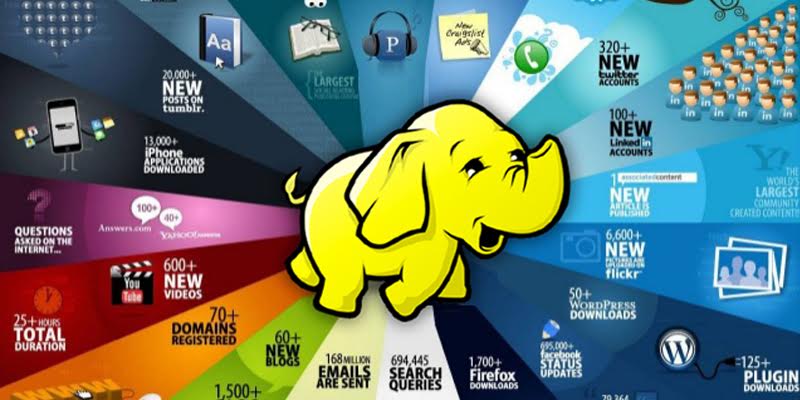
Size and type of data sets being collected and analyzed by business for intelligence is rapidly growing, making traditional warehousing solutions more expensive. Hadoop is used by organizations to store and process extremely large data sets. Organizations can easily use Hadoop to process or model larger volumes of data from single sources. However, organizations experience challenges when attempting to combine and analyze different data sources due to their varied structures, making connecting and mapping them together extremely difficult. Hadoop provides the ability to do analysis in a really large scale way, with all enterprise data, regardless of size, format and structure which can help organizations to identify their business drivers, competition and partners.
Data always exist either in structural, non structural or semi-structural. Structural can be processed and analyzed using different formats and tools. But, when it comes to semi structured and unstructured there is always a challenge. Structural data has only textual data. “Notepad” is the best example for structural data. Semi-structural data includes textual, images, audio and video. “PowerPoint presentations” is the best example which we has video, audio, images including normal textual information. Unstructured data, is completely free-form, non-tabular and deals with “Audio, Videos and Images.” As majority of organizations has data residing in any of the above formats and it tends to get more complicated in analysis of unstructured and semi-structural data. This is a challenge every enterprise has on analyzing this data and to provide insights on this data. There is a huge demand in providing insights into multimedia data. Processing large volumes of multimedia content can be daunting task.
To combine unstructured and semi-structured data with structured data, unstructured data needs to be converted into a structured form that enables it to be correlated with structured data. These challenges are addressed by Semantic web which integrates combination of data from diverse sources and building relations with real world objects. This would allow a person or a machine to start off with one data source and move through the connected data sources or maps.
Three main semantic web standards are:
- Resource Description Framework (RDF) – Method for data interchange on web, which allow in combining of structured and semi-structured data across platforms.
- SPARQL – SPARQL protocol and RDF query language helps in query the data across platforms.
- OWL – Web Ontology Language enables users to define data from all sorts’ heterogeneous data sources and also a way that allows data to be mixed and matched with other data for various uses and applications.
Processing unstructured data means extracting structure from it. Converting this unstructured data into different structures, analyze how the words fit together. Then polarity that identified the text to be positive, negative or neutral. Once this data is converted into natural and structured format then we can efficiently mine the data and generate analytics on the data.
For example:
If we take large video posted in enterprise repository, Natural Language Processing can be used to process the video and organize the data into structured format. This structured data or decoded data is stored in a sequence in Hadoop Distributed File System(HDFS). Based on the characteristic of the objects and based on the keywords extracted, we can process the video and will give the ranking and allocation of the video to respective data cluster. This will help in justifying if that video is useful for future purposes or can be removed from the file system. This reduces load as well as expense on maintaining unwanted data. As the data becomes structured and organized it can be easily searchable based on its characteristics or objects.
There is still lot of research that is being carried on mining unstructured data. But with Natural Language processing and availability of tools like Hadoop, we are able mine unstructured data as well and provide real time analysis and metrics.
Phenomecloud is an enthusiastic family of individuals, fervent to make lives simpler through effective use of technology. Our mission is to implement solutions that drives business results. Know more insights from our thoughts and experience.
Contact us today or call 1-855-978-6816 to talk with us about your business needs.




Leave a Comment